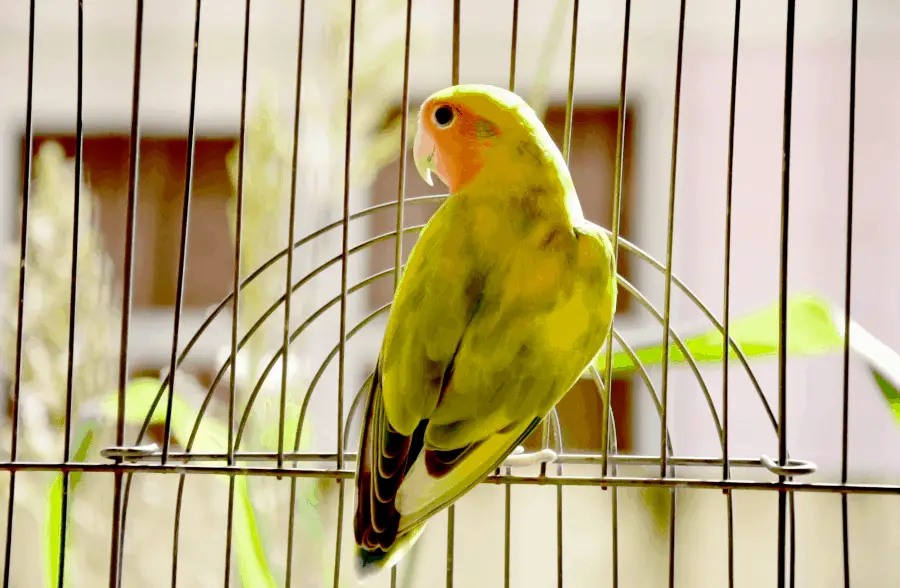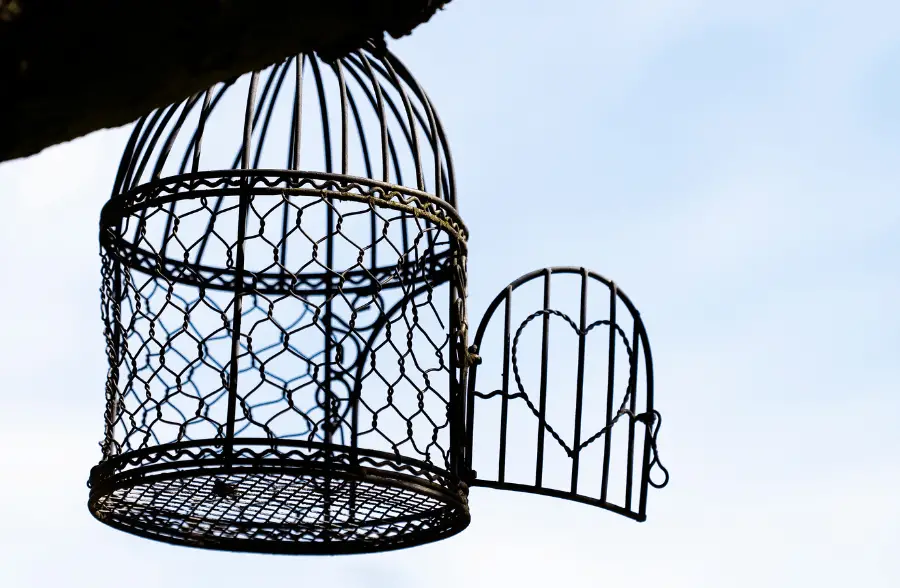Birds have very sensitive respiratory systems, enough so that they can detect any hints of carbon monoxide. They have a system that cycles air out at a faster rate than humans. This means they are more likely to be impacted by fumes in the air.
So, is oil paint safe for birds? Usually not, unless you find linseed, or non-toxic oil paints. Regular oil paints are known to have horrible fumes. These fumes are dangerous to humans, so they are going to be even more dangerous to birds. When you paint with oil paint, it is usually necessary to use thinners and solvents. These products are completely unsafe for birds.
The primary risk of oil paint is hydrocarbons that can cause several different health concerns in birds. Hydrocarbons are any organic compounds composed only of carbon and hydrogen. These can cause issues with breathing, coughing, and irritation to their skin. In this article we go over everything you need to know to keep your birds safe from oil paints. Let’s read on!
How Long After Painting is Oil Paint Safe for Birds?

If you are painting the room where you normally keep your birds, you will definitely want to remove them from the room and keep them somewhere else. It is important to keep the birds away from the paint fumes until the paint has plenty of time to cure and dry.
Depending on the paint you use in the room, it could take anywhere from a few hours to a few days for the paint to dry completely. A good way to determine if your birds are safe back in the room is to smell the room. If you don’t smell the fumes anymore, wait an additional day before moving the birds back in to be safe.
My favorite and top pick is always Arteza Oil Paints. They have so many different colors, and the quality is amazing! I usually use Arteza Paints for all my projects.

If you are painting your bird cage, you will need to have a separate cage to keep them in during the painting and drying process. Keep the painted cage in an open area with air circulation, allowing it to dry as quickly as possible.
Make sure the cage is completely dry before you reintroduce your bird to it. The fumes can bother them, and it is best to avoid the situation completely. It is recommended to wait a day or two after the cage is completely dry before putting the birds back in. This will be the safest option for them.
Can Paint Fumes Kill a Bird?

If birds are exposed to paint fumes, it can potentially be life threatening. The respiratory system of a bird is so sensitive that they can even have issues around scented candles. There have been several cases reported where bird owners weren’t aware of the risks of paint fumes, and their birds sadly suffered the consequences.
Birds need to be kept away from any kind of paint fumes, even if the paint is safe for animals. The fumes while drying will be dispersed into the air and can remain in the air until the paint is completely dry. The wet paint will continue to produce fumes until it has completely dried and cured.
How Do I Stop Birds from Eating My Paint?

It can be frustrating to see birds eating and chipping paint, especially if it is the paint on your house. You might notice that birds are pecking at the side of your house to pick pieces of paint off. It is likely that the birds will chip the paint off, then head down to the ground to eat the fallen chips.
It is most common for birds to be attracted to light colored paints and will be more likely to chip that paint off. There is a surprising solution to this problem that has proven to work in several cases. One of the main ingredients in paint happens to be limestone, which is a common source of calcium.
It has been discovered that birds will chip the paint off houses to get more calcium, which is essential for laying eggs in the spring. The solution for birds eating paint chips is offering them a Calcium Perch.

A calcium perch is a great source of calcium for birds who love to eat paint, or their cages. There have been multiple reports that show providing a calcium perch or toy to birds, stopped the birds from chipping and eating the paint off the side of houses.
You can also give your birds eggshells. Eggshells are another good source of calcium if you don’t want to buy a calcium perch or vitamins.
Before giving the birds the eggshells, it is important to sterilize them so the birds don’t get sick. You can boil the eggshells, or put them in the oven at 250 degrees Fahrenheit for about twenty minutes. For the best results with the eggshells, provide between two and three cups of egg shells every day.
What Paint is Safe for Bird Cages?

Painting your bird cage in a safe manner is much easier than you might think. A paint that is safe for your bird will be free of volatile organic compounds, zinc, lead, chromate, and all other chemicals that can potentially harm your bird.
The paint will also need to be designed for use on bare metal material with a high durability. Chip-resistant paint is also a plus. Quick drying paint will be the best option because you will be able to get your bird back into its cage as soon as possible.
If you want to paint your birdcage with oil paints, I recommend Meeden Oil Paints. They’re non-toxic and are suitable for metal cages.

I also recommend using Acrylic Paints on your birdcage. Acrylic paints are water-based, and non-toxic. They’re much safer than oil paints, especially if you plan on having your animals near the paint. While you can certainly paint your birdcage with oil paints, if you’re looking for a more non-toxic and easy paint, I would go with acrylics.

When it comes to safely painting a bird cage, the process is very simple. First, you will want to clean the cage. Scrub the cage with a wire brush to get rid of any possible flakes and sand the surface to be smooth. You will then want to wipe down the cage with a damp cloth to get rid of any dust.
It is recommended to wait about five to seven days after you are finished painting to allow the paint to dry and cure. Curing time will usually vary, so make sure you check the manufacturing label to see what their recommended time is. The best way to tell if it is safe to put your bird back in the cage is by smelling it.
When the paint is completely cured, you won’t be able to smell any fumes anymore. As long as there are no fumes and the paint is dry to the touch, you can put your bird back in the cage. You will want to make sure the room has proper air circulation to keep your bird completely safe.
How to Seal a Painted Birdcage
After your paint is dry, you can also choose to seal your painted birdcage with a varnish. Whether you painted the cage with acrylics or oil paints, some people like to give it that glossy look finish with varnish. I highly recommend Mod Podge Spray Varnish. I like this sealer because it’s waterproof and also non-toxic.

Mod Podge is great because it protects your paint from chipping and flaking sue to natural causes. People who paint with acrylics almost always seal their paint with a varnish. Make sure the paint is fully dry before applying any sealer. You will want to spray about 12 inches away from the surface, and give it a nice even coat. You can apply two coats for extra protection.
The varnish will need to dry for about 24 hours before you can move it. I recommend waiting until the smell dies down before putting your birds back in the cage, which will typically be around 2-7 days. If the smell is too strong for you, it’s most definitely too strong for your birds.
Final Thoughts
If you want to use oil paint to paint your bird cage, you can, but it’s not always recommended. You must make sure the paint is non-toxic and kid friendly. Oil paints have fumes that can be very dangerous, even potentially life threatening, to birds. You can also use acrylic paints for your birdcage, as acrylics are non-toxic and waterbed, making them safer than oil paints.
Birds have incredibly sensitive respiratory system, so they are going to be much more sensitive to fumes than we do as humans. When you paint, it is recommended to keep your bird away from the paint until it is completely dry.
Make sure to follow all my tips and recommended products to make sure your birdcage project turns out great, and safe. Also, don’t forget to check out my other articles for all your painting Q&A’s. Happy painting!


